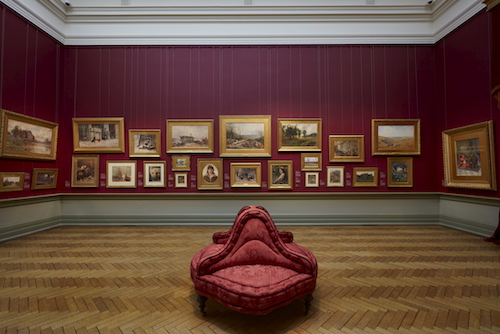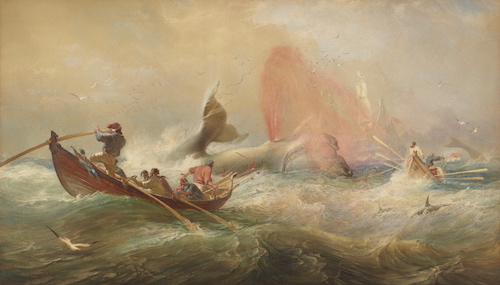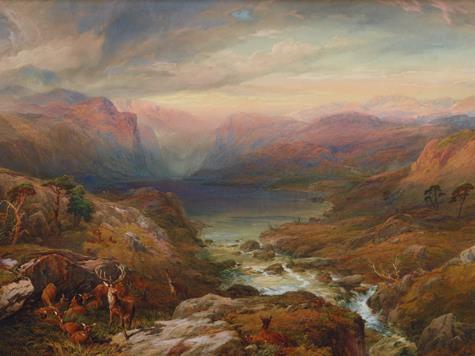Image: Thomas Miles Richardson Jr, Evening, Loch A’an, Grampians, Aberdeenshire 1883 (detail). Watercolour, bodycolour, pen and ink over pencil underdrawing with scraping out. 75 x 125 cm image, Art Gallery of New South Wales Purchased 1890.
This month, at the same time as funding for the Art Gallery of New South Wales expansion has been confirmed, the Gallery is exploring the history of its collection for the exhibition Victorian Watercolours. After decades in storage, over 80 beautifully restored works are now presented in the Gallery’s Grand Courts.
Peter Raissis, curator of European prints and drawings, said the exhibition represents the oldest part of the Gallery’s collection. ‘It is an exhibition about the history of the Art Gallery of NSW’s collection. It is our foundation collection.’
‘There were a group of six watercolours that were the first purchases by the gallery. We have two of those in the show, and one of them is a work by artist Thomas Miles Richardson Junior that was commissioned specially,’ he continued.
Raissis said the exhibition reflects an early period of Australian history, when the young NSW colony looked directly to England as the heart of enlightenment and culture to commission works of water colour in line with the growing popularity of this medium at the time.
‘It is very interesting that back in the 19th century the Gallery trustees sought out a specific artist to paint a scene of mountainous landscapes in the lake district of England for the new collection here in Sydney. It just shows how much the colony of NSW and Australia in general at the time followed England culturally,’ he said.

Installation view of Victorian watercolours exhibition. Photo: Jenni Carter, AGNSW.
Many of the watercolours that have remained out of sight for over a century are now on display in the spaces that they were originally designed to be exhibited in – complete with a crimson-walled Victorian setting, sash curtains, palms and period-style seating.
What the public won’t see is the long process that has occurred behind the scenes. This includes a meticulous conservation project carried out over two years, which has led to a new understanding of the technical details of works held in the collection. In the watercolour Whalers off Twofold Bay, New South Wales (1867) by Sir Oswald Brierly, conservationists discovered that the large work was composed of three sheets of paper glued by the artist onto a wooden backing board.

Image: Sir Oswald Walters Brierly, Whalers off Twofold Bay, New South Wales 1867. Watercolour with white highlights and scraping out. Art Gallery of New South Wales Purchased 1901.
‘The project entailed not only conservation work on the watercolours themselves, which was done by our conservator Analiese Treacy – so removing stains, removing marks, removing them from the boards they were laid down on – but also a huge amount of work has gone into the conservation of the original frames,’ said Raissis.
Most of the watercolours retained the original Victorian frames which have been painstakingly restored to their original grandeur by the Gallery’s head of frames conservation, Margaret Sawicki, and conservators Barbara Dabrowa and Emma Rouse. Where the Gallery didn’t have original frames for the work, framemaker Tom Dixon has constructed replicas.
The frames are incredibly important to these watercolours, painted during the rise of the medium in the Victorian period. The “exhibition watercolour”, as the large, detailed works became known, were intended for exhibition. Artists promoted the medium in the face of established prejudices that dismissed watercolour in preference for the oil painting.
‘Artists wanted to present them in elaborate frames with wide gold mounts so they would have the same presence on walls as oil paintings,’ explained Raissis.
Victorian Watercolours is on from 2 June to 3 December, Grand Courts, Art Gallery of New South Wales. Free admission. Find out more here https://www.artgallery.nsw.gov.au/media-office/victorian-watercolours/





